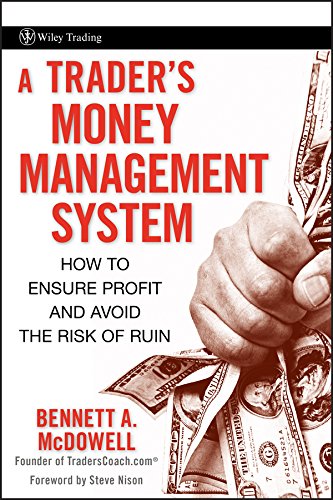
After a significant price movement up or down, the new support and resistance levels are often at or near these trend lines. The Fibonacci strategy is based on the idea that markets tend to move in waves, with each wave consisting of a move in the direction of the trend, followed by a retracement in the opposite direction. The Fibonacci retracement levels are used to identify potential levels of support and resistance in the market based on the key Fibonacci ratios of 23.6%, 38.2%, 50%, 61.8%, and 100%. Fibonacci retracements are a technical analysis tool used to identify potential levels of support and resistance in a price chart.
Fibonacci retracement and extension is a technical analysis tool that uses horizontal lines to identify potential levels of support and resistance in an asset’s price movement. By plotting the price swings from high to low, traders can use the Fibonacci ratio of 23.6%, 38.2%, 50%, 61.8%, and 100% to forecast where the price may retrace or extend to. The Fibonacci retracement levels are used to determine the support levels, while the Fibonacci extension levels are used to identify potential profit-taking levels. These levels are widely used in forex, stocks, and cryptocurrency trading to make informed trading decisions and increase the chances of success. When technical analysis newbies first encounter Fibonacci studies, they typically start with Fibonacci retracements. Retracements are displayed as horizontal lines based on the Fibonacci ratios (primarily 38.2%, 50%, and 61.8%) and plotted on price charts to identify potential levels of support or resistance.

By plotting Fibonacci ratios such as 61.8%, 38.2% and 23.6% on a chart, traders may identify possible retracement levels and enter potential trading positions. Build Fibonacci retracement and extension grids to identify hidden support and resistance levels that may come into play during the life of a position. The most dependable Fib reversal signals come when grid ratios align tightly with other technical elements, including moving averages, gaps, and prior highs/lows. Build detailed entry and exit strategies with retracement grids, while using extension grids to locate price targets and realign risk management parameters.
Using a significant high and low as anchors, traders draw a line connecting the two points. Then, they draw three trendlines from the low point at angles that correspond to the Fibonacci ratios of 38.2%, 50%, and 61.8% (see figure 3). Again, the idea behind Fibonacci fans is that these lines act as potential support and resistance levels for price as it moves across the chart. Forex traders identify the Fibonacci retracement levels as areas of support and resistance. Because of this, these levels are watched by many traders which is why this strategy could be a difference-maker to your trading success.
This Fibonacci level comes from the relation between a number of the sequence and the number that is two steps ahead. However, others view Fibonacci analysis as mere coincidences or self-fulfilling prophecies, meaning they https://1investing.in/ work only because enough people use them—not because they’re divining natural patterns in the market. The effectiveness of Fibonacci numbers in trading and investing is a subject of debate among market participants.
Fibonacci Trading Strategy in Forex Market: Unlocking the Secrets to Profitable Trading
Fibonacci retracement levels often mark retracement reversal points with surprising accuracy. The retracement levels are a powerful tool that can be applied to all timeframes, including day trading and long-term investing. Fibonacci numbers also play a crucial role in the Elliott Wave principle, a technical analysis tool used to identify market cycles.

Add shorter term grids as part of daily trade preparation, using alignments to find the best prices to enter and exit positions. Add other technical indicators and look for convergence with retracement levels, raising odds that prices will reverse in profitable counter swings. To construct Fibonacci arcs, a trader can select two pivot points—usually a swing low and swing high—and draw a line connecting them.
Fibonacci Channel Trading Steps
Each of the Fibonacci arcs is a psychological level where the price might find support or resistance. If the price starts trending in our favor, we stay in the market if the alligator is “eating” and its lines are far from each other. When the alligator lines overlap, the alligator falls asleep and we exit our position. The two green circles on the chart highlight the moments when the price bounces from the 23.6% and 38.2% Fibonacci levels. If there is only a 15% chance you will walk away a winner, just exit the trade with a predetermined allowable loss percentage or right at the market. If you are day trading, you will want to identify this setup on a 5-minute chart 20 to 30 minutes after the market opens.
Fibonacci Retracement Levels Guide: A Comprehensive Overview – Bitcoinsensus
Fibonacci Retracement Levels Guide: A Comprehensive Overview.
Posted: Tue, 08 Aug 2023 15:32:09 GMT [source]
However, even for the sceptic, it can give an extra level of insight to potential market turning points that may not be clear at first glance. You should always consider risk management strategies when using technical indicators in trading. If a market has fallen, then Fibonacci fans will apply the retracements to bounce back up. If it rallies 38.2%, then those looking at Fibonacci retracements will expect the rally to run out of steam. If that level is broken, then the 50% level is where traders would look for the market to turn back down.
And finally, if that one gets broken then a 61.8% retracement of the down move is the next target, with a break here suggesting that the market will go all the way back to where it started the fall. The Fibonacci sequence and golden ratio appear frequently in nature, biology, architecture and fine art. It is seen in flower petals, tree branches, human DNA and population growth. The golden ratio and other Fibonacci ratios are also often found in the financial markets, and they form the foundation of the Fibonacci retracement tool.
Three Fibonacci Trading Strategies + Infographic & Video
For example, it was commonly believed the .618 retracement would contain countertrend swings in a strongly trending market. That level is now routinely violated, with the .786 retracement offering strong support or resistance, depending on the direction of the primary trend. Traders and market timers have adapted to this slow evolution, altering strategies to accommodate a higher frequency of whipsaws and violations.
That level marks a tradable low ahead of a sharp recovery that stalls at the 78.6% (.786) retracement. Deeper market analysis requires greater effort because trends are harmonic phenomena, meaning they can subdivide into smaller and larger waves that show independent price direction. For example, a series of relative uptrends and downtrends will embed themselves within a one- or two-year uptrend in the S&P 500 or Dow Jones Industrials. We see this complexity most clearly when shifting higher, from daily to weekly charts, or lower, from daily to 60-minute or 15-minute charts.
It’s important to conduct thorough research, backtesting, and experimentation to determine if Fibonacci tools align with your trading style and provide consistent value. Her topics of expertise include futures and options trading strategies, stock analysis, and personal finance. Whether you want to believe it or not, Fibonacci levels play a critical role in defining support and resistance levels when day trading. Now, it’s time to take you to the level of an intermediate Fibonacci trader. To do this, you need to know the other two critical levels – 38.2% and 61.8% retracement. “Fibonacci retracement is a good tool to use when deciding if now is a good time to buy, but do not look at it as the holy grail.
What Is a Fibonacci Analysis?
The process also requires multi-trend grid placement, with successive levels placed at longer and shorter time frames until they capture price ranges that might come into play during the life of the open position. Fibonacci supports a variety of profitable strategies, but incorrect grid placement undermines prediction and confidence. Traders get frustrated when they try the tool for the first time and it doesn’t work perfectly, often abandoning it in favor of more familiar analysis. However, persistence, precision, and a little formfitting can generate trading edges that last a lifetime. Having a hard time figuring out where to place starting and ending points for Fibonacci grids?
- For this reason, the indicator is best used alongside other technical analysis tools such as trend lines, volume, moving average convergence divergence (MACD) and moving averages.
- If the stock approaches one of these levels, traders may take this as an opportunity to enter a trade, as the stock may find support at the level and bounce back up.
- A. The believers claim it’s very successful but critics (like we are) have yet to see any rich Fibonacci trader (and we have not seen any successful backtests).
- The Fibonacci retracement level gives technical traders a good edge in the market.
This methodology applies to exits as well, telling forex traders to take profits when the price reaches a retracement level that shows multiple alignments. The reliability of retracement levels to stop price swings and start profitable counter swings directly correlates with the number of technical elements converging at or near that level. These elements can include Fibonacci retracements in other time periods, moving averages, trendlines, gaps, prior highs/lows, and relative strength indicators hitting overbought or oversold extremes.
Fibonacci retracement lines are often used as part of trend-trading strategies. If a retracement is taking place within a trend, you could use the Fibonacci levels to place a trade in the direction of the underlying trend. The idea is that there is a higher chance a security’s price will bounce from the Fibonacci level back in the direction of the initial trend.
You want to see the volatility drop, so in the event you are wrong, the stock will not go against you too much. So, how can you profit during the time when others like to get lunch? The reason lunchtime trading is so challenging is that stocks tend to float about with no rhyme or reason. This is not only when you enter bad trades, but also exiting too soon.
The key Fibonacci levels that you want to use to trade
The below price chart of the S&P 500 stock index shows its upward move A to B, then retrace to C, before carrying on. The Fib extension levels show price went higher than 4474 (B) before beginning to consolidate in the region of the 1.236% Fib extension. Those trading a Fib strategy, whether they went long at A or C, or anywhere else along the way, will be able to use the Fib extension levels as target points for exiting the trade. Therefore, a breakdown or kickback from Fibo levels usually causes operation of a huge number of the postponed orders, and consequently it amounts to the signal capable to affect a general tendency. Any Fibonacci Forex trading strategy for the market trade shall consider that in the zone close to Fibo levels speculative price bounces can possibly happen in case of a sharp breakdown.
Stretching the grid across a major high and low works well in most cases but many traders take a different approach, using the first lower high after a major high or first higher low after a major low. This approach tracks the Elliott Wave Theory, focusing attention on the second primary wave of a trend, which is often the longest and most dynamic. There’s great synergy between the two applications because price levels uncovered through long-term historical analysis work well with short-term trade preparation, especially at key inflection points. Since currency pairs oscillate between contained boundaries through nearly all economic conditions, these historical levels can impact short-term pricing for decades. Ultimately, the effectiveness of Fibonacci numbers in trading and investing is a matter of personal preference and individual interpretation. Some traders find them useful and incorporate them into their strategies, while others rely on different methods.
A. Fibonacci trading is a trading strategy that uses Fibonacci ratios to identify potential support and resistance levels. Fibonacci ratios are derived from the Fibonacci sequence, which is a sequence of numbers where each number is the sum of the two preceding numbers. Fibonacci ratios are used to identify areas where price levels may reverse or consolidate before continuing the current trend.
Novo Nordisk (NVO) Reacted Higher From Support Area – Barchart
Novo Nordisk (NVO) Reacted Higher From Support Area.
Posted: Mon, 11 Sep 2023 17:51:00 GMT [source]
In conclusion, the Fibonacci strategy is a popular and effective trading strategy that can be used in a variety of markets and timeframes. By identifying potential levels of support and resistance based on the Fibonacci retracement levels, traders can make informed trading decisions and improve their chances of success. Traders use Fibonacci retracements to identify potential levels of support and resistance in a price chart. If elliott wave india a price movement retraces to a Fibonacci level, it could be an indication that the price will reverse direction at that level. Traders can use Fibonacci retracements in conjunction with other technical analysis tools to confirm potential trade entries and exits. A Fibonacci fan is a technical analysis tool that uses Fibonacci retracement lines to identify potential levels of support and resistance in an asset’s price action.
